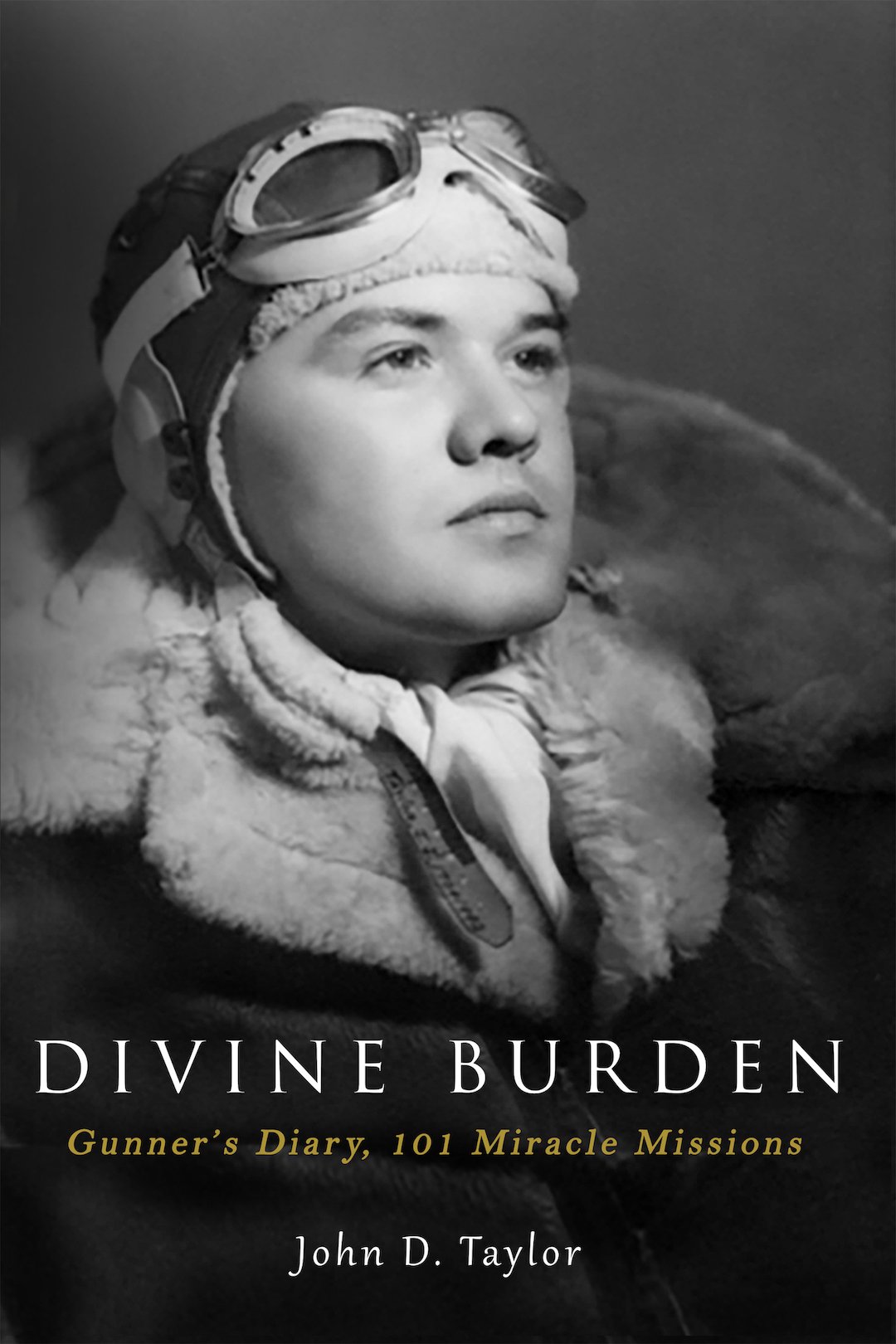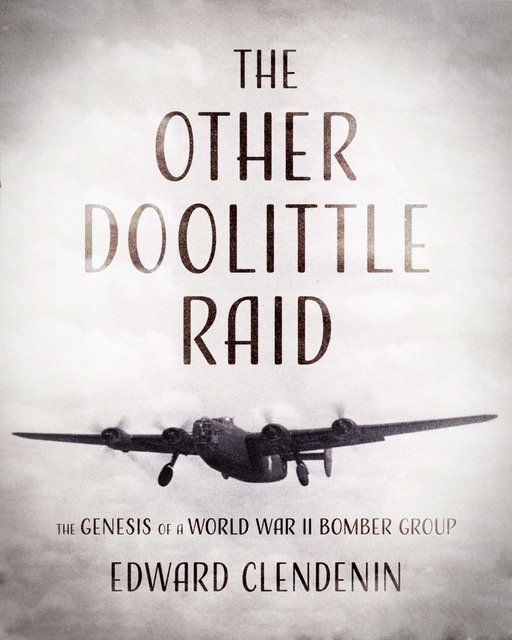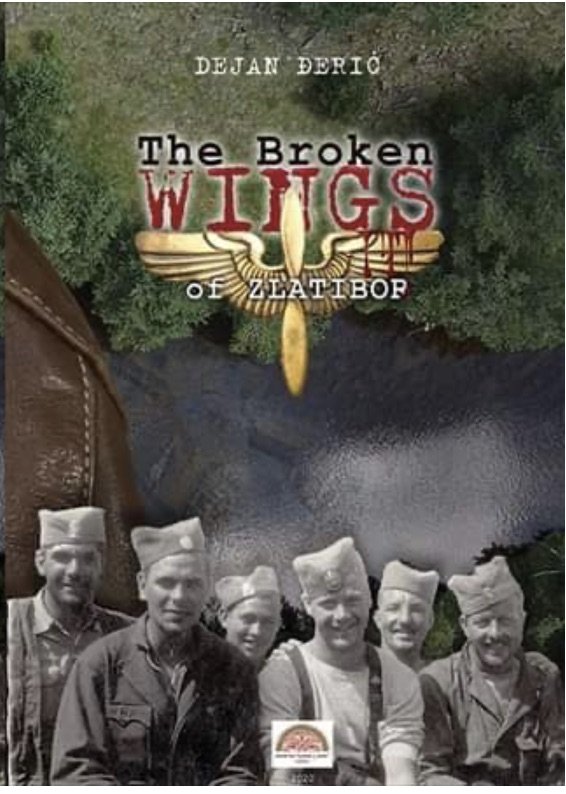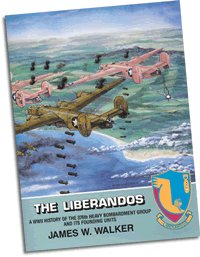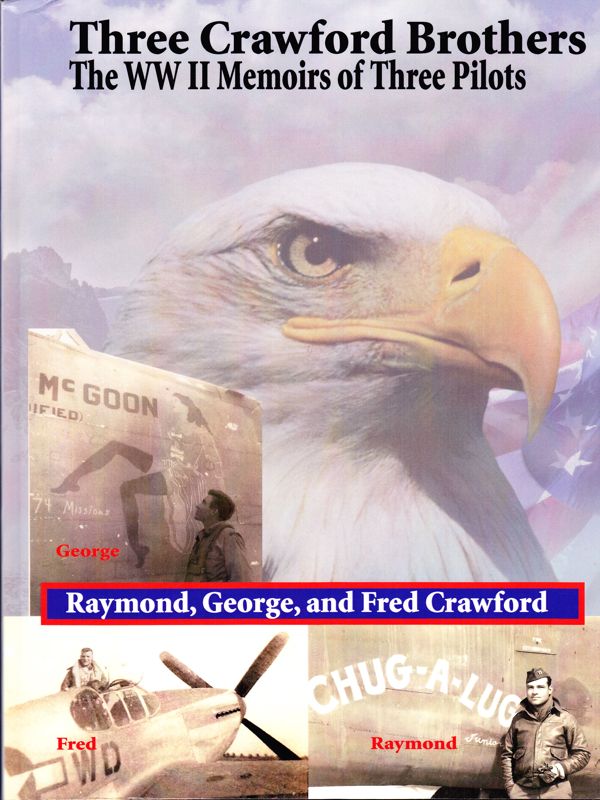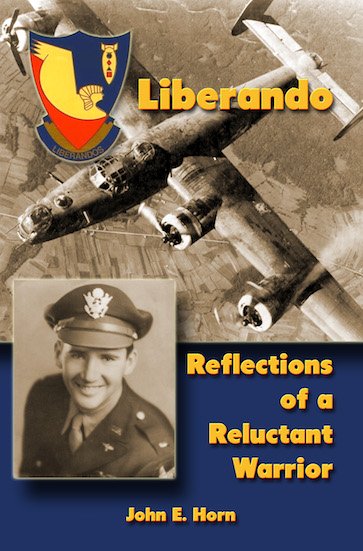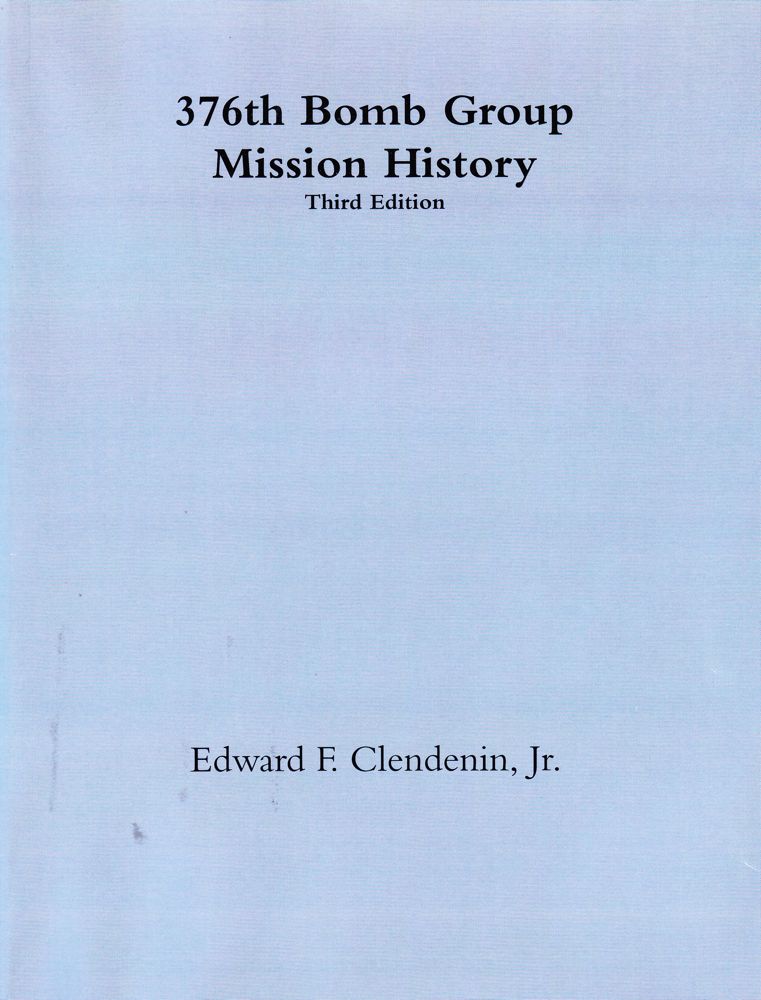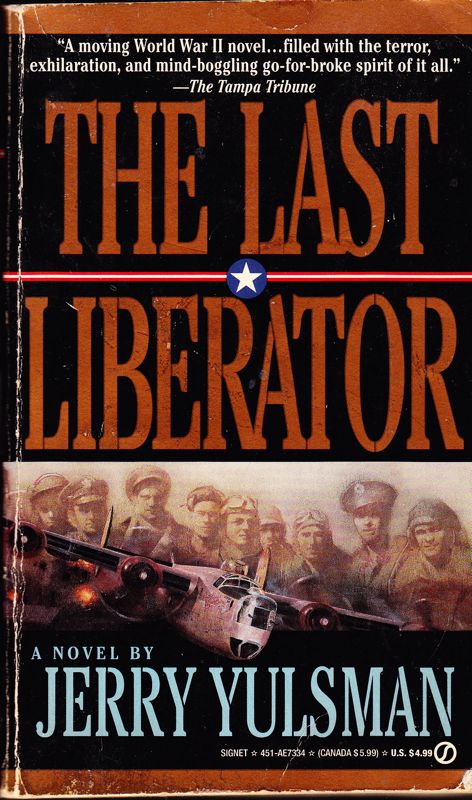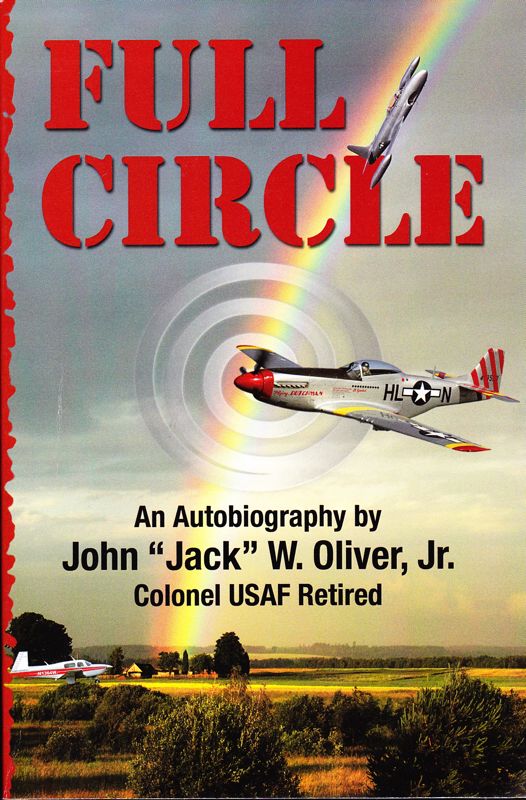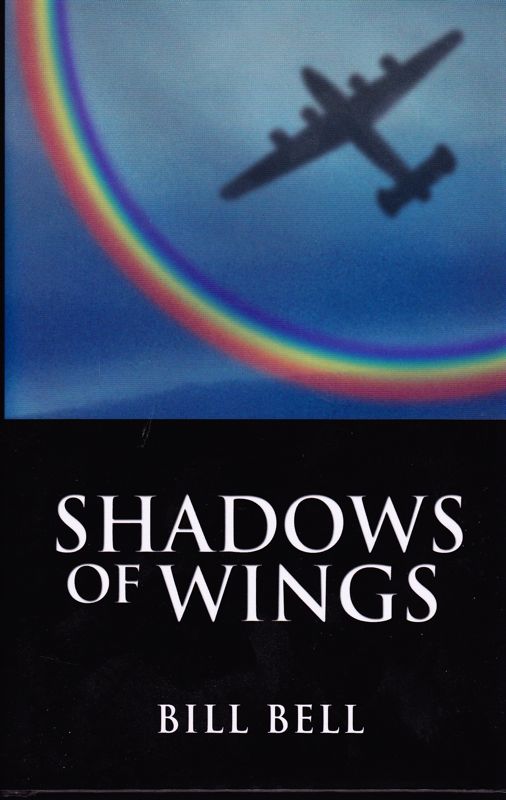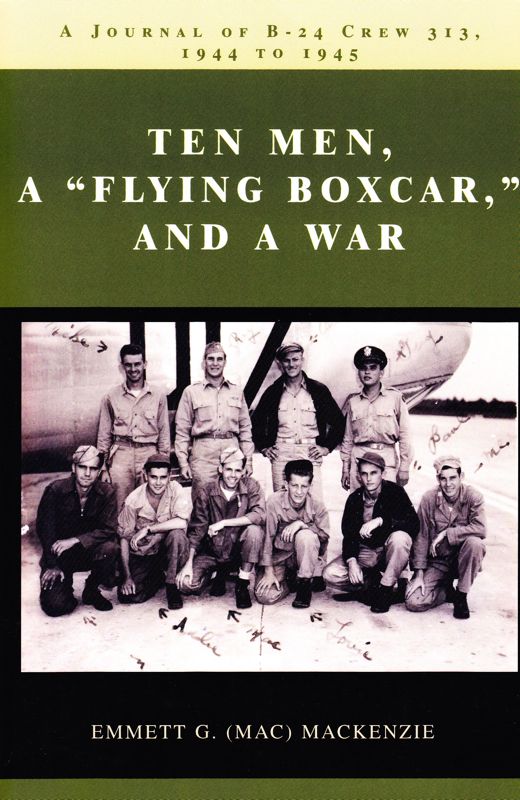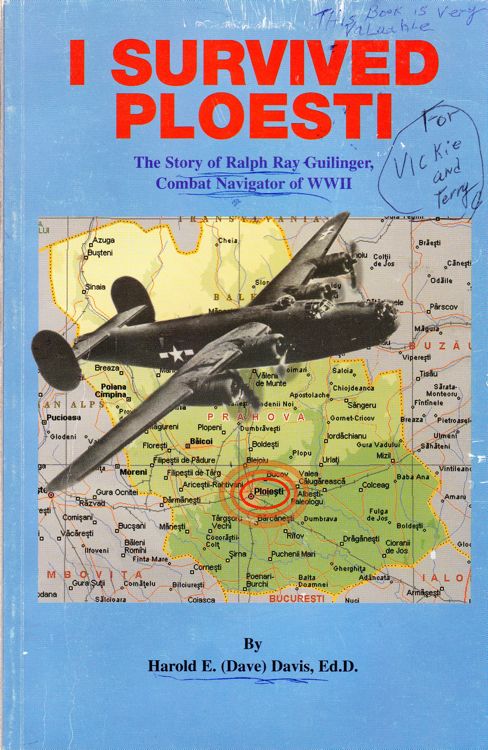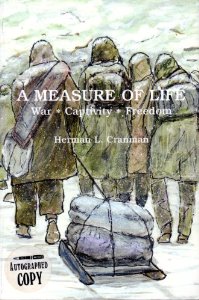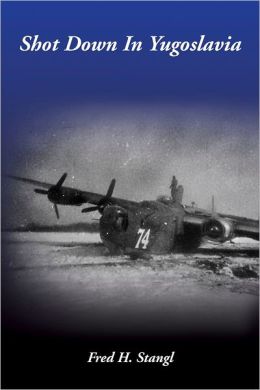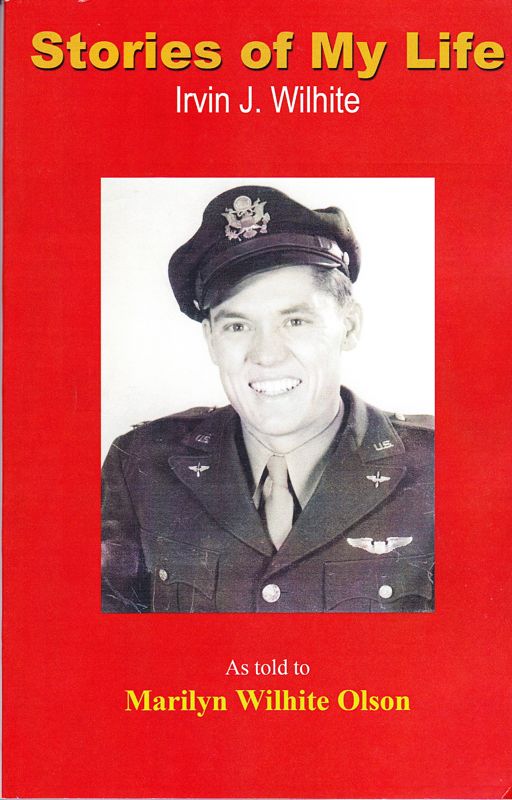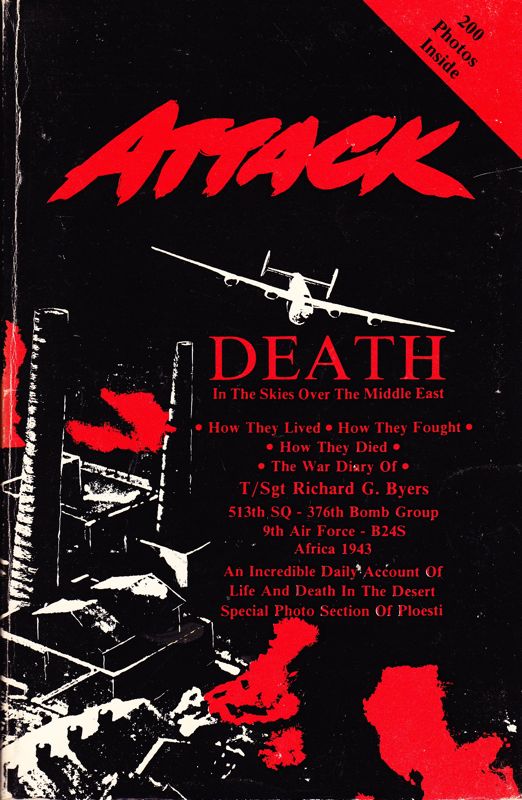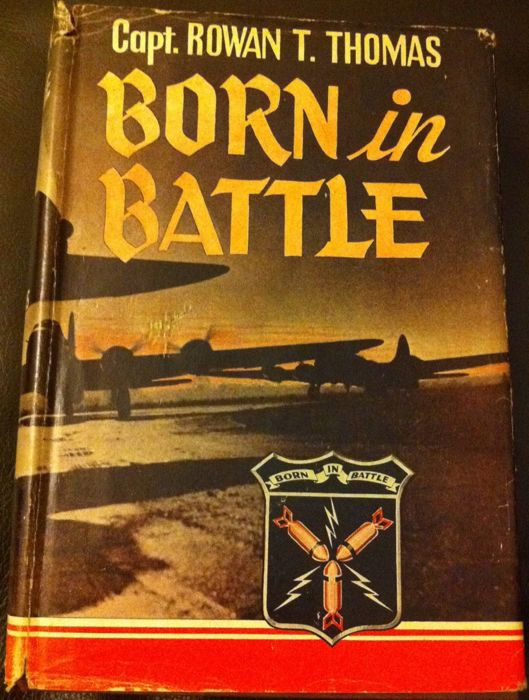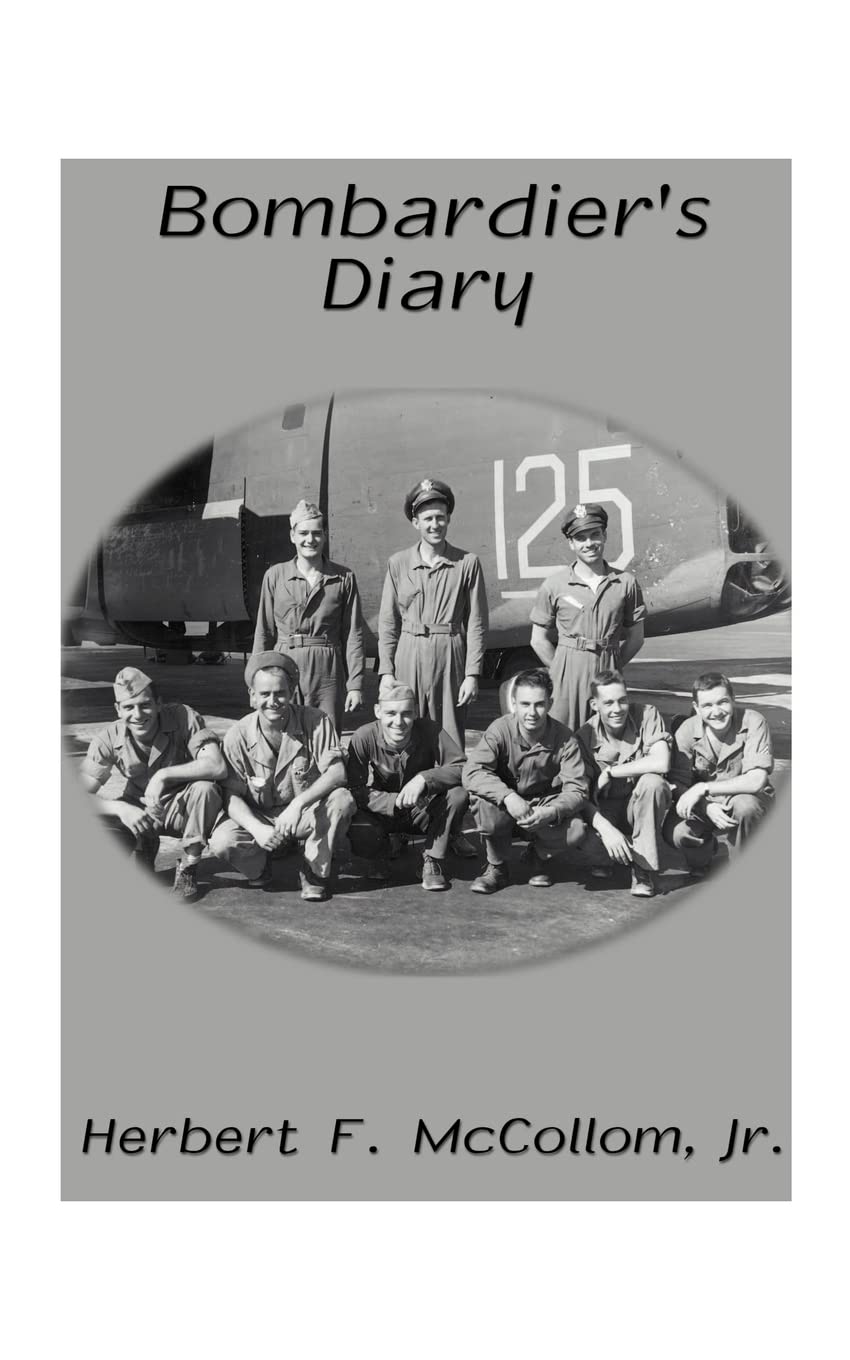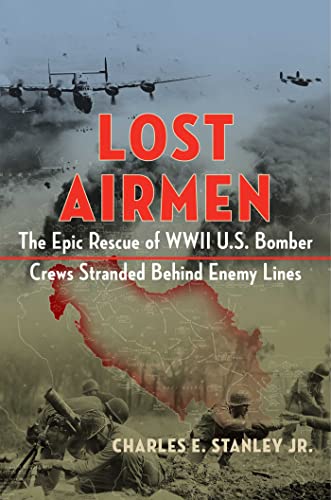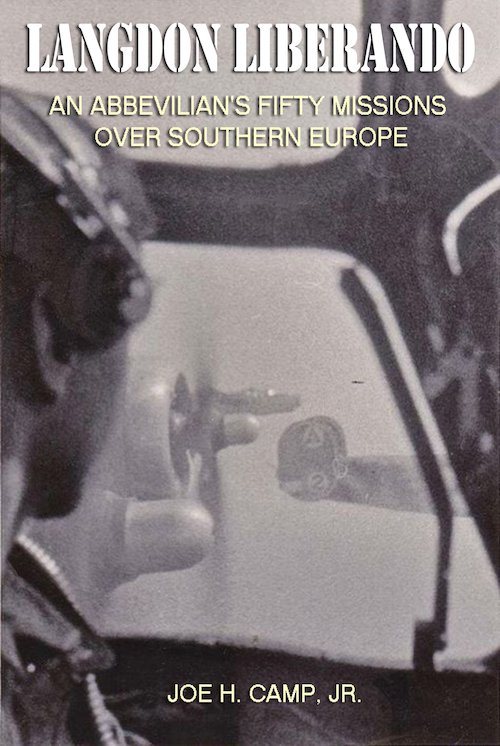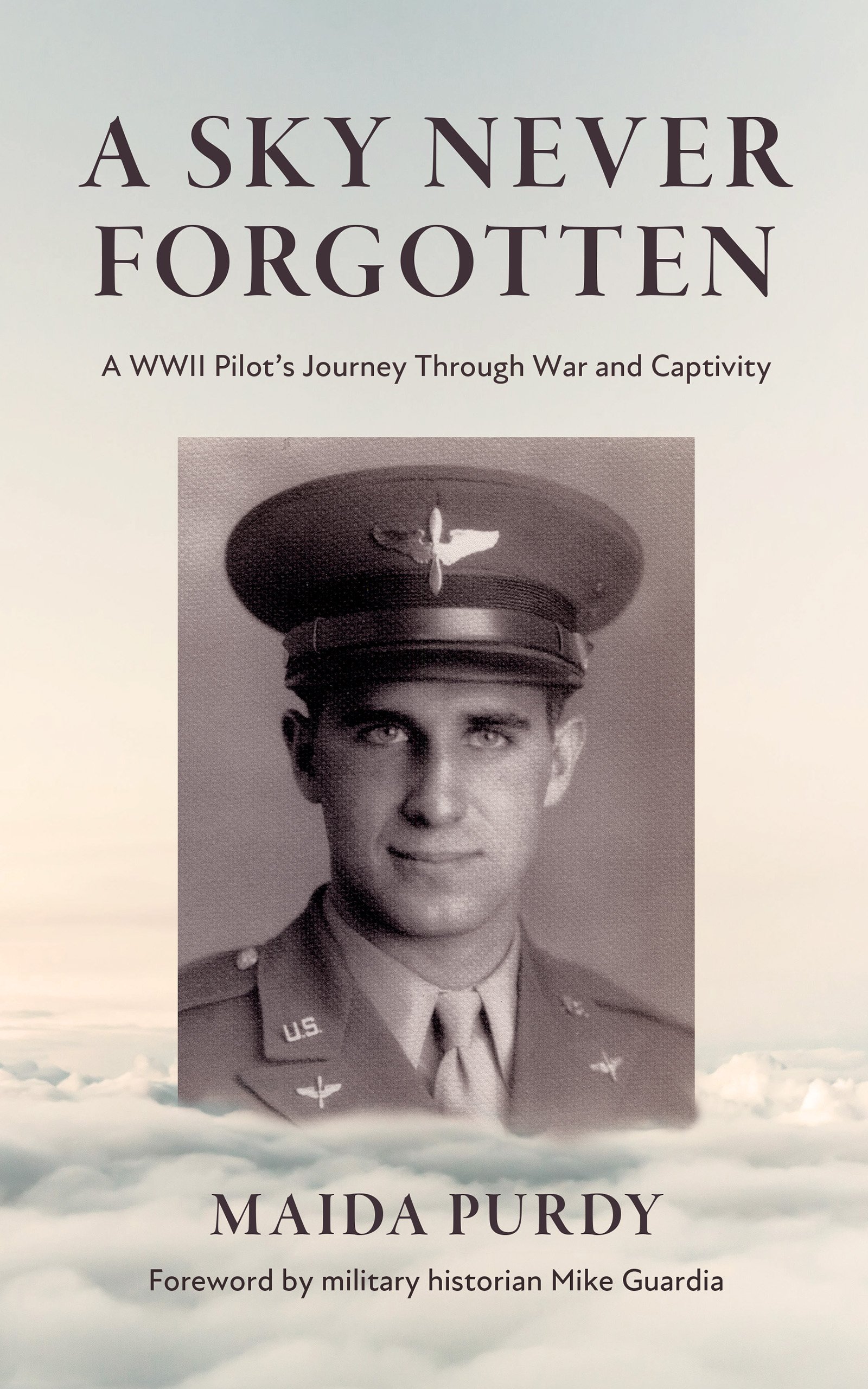Joseph J. Bitzer, Part II
Well, that's the end of my story written in 1991. Now two years later at the behest of Clarke Brandt, I’ve dug into memorabilia from the war and will add a few comments. A story about heroes? No, just ordinary guys doing what had to be done at the time, and praying to get back home as soon as possible. Way back in May of 1942, I was just a 2l-year-old guy working in an office, attending night classes in business and accounting at St. Louis University, and hoping that nasty war would end, when the Air Corps came around looking for recruits with the promise that if we enlisted NOW we could finish college, and then enter the Air Corps. So my buddy and I enlisted on May 9, 1942. By February of 1943 we certainly had not finished college, but the Air Corps said they needed us. Away we went to Jefferson Barracks, an old Military establishment south of St. Louis for our baptism into the military, preliminary to becoming Air Cadets. Evidently too many thousands were being inducted, so off we went to Michigan State University at East Lansing, for a few months studying math and getting ten hours flying time in a Piper Cub.
Then down to San Antonio for pre-flight training - all the basics - like marching, calisthenics, firing a gun or two, picking up rocks, throwing them in a truck, which dumped the rocks out at night so we had some to pick up the next day. Now if you typed well, and they needed someone in the office, you got out of picking up rocks - I typed well. This “training" also included many physicals, exams in math and other subjects, psychological exams, interviews with psychiatrists with funny questions, and then the big question to me standing before 4 high-ranking officers, "You did well in all your tests, you have the choice of being pilot, navigator, or bombardier. You can think about it." They caught me by surprise. I really didn't know. After all, I had not been an aviation nut, had only been in a plane once before joining, and that was for a ten-minute sight seeing ride. So they gave me two minutes, and I said “pilot".
Off to Pine Bluff, Arkansas, at that time a. small town with wonderful people and a small airport. It's now November, '43, this is Primary Training, and I'm in the front seat of a two-seater open cockpit 175 HP PT19, with my instructor in the rear seat. It was scary, but fun. Lots of time was spent on studies, and flying almost every day. After about eight hours flying time with my instructor, I went up Bolo. I will never forget solo spins, which must be practiced so one knows how to recover should the plane go into a spin unexpectedly.
Next stop was Independence, Kansas, Basic Training, to try to learn to fly the BT14 with 450 horses up front. Here I also got into the link trainer to learn instrument flying. And when the time came for night flying, consisting basically of a bunch of guys like myself who had maybe three months of flight training behind them, shooting landings and takeoffs, one after another until the tower said "Come on in this time" - this was as close to getting killed in training as I came. It was dangerous when my instructor, a very good pilot, told me to take it solo after just a couple landings with him, cause he was scared to death.
Although I really enjoyed flying, I decided I was not a real "hot" pilot, so chose multi engines, and went to Pampa, Texas for Advanced Training in the UC78, with two 225 HP engines, a very light plane, easy to fly, not dangerous, which I can attest to when buddies of mine landed, only to have another of these planes land directly on top of them - and everyone walked away without a scratch. Formation flying was fun, and night formation intriguing.
So now it is May 23, 1944, we're made 2nd Lieutenants, given our "wings", and can dress snappily like an officer - and an AIR MAN. We did get a furlough now and then, to spend a few days back home. This was one of those times - when I got my wings. Along the way I had done a little writing, and did some for our "year book", class of 44-E. This is how I ended my dissertation in the conclusion of the book. “We are in the Army Air Forces. We are a vital part of that efficient organization. There are huge tasks awaiting us, but we have behind us a vast amount or hard work, unending perseverance, and endless instruction from our skilled "big brothers”. So we shall carry on, trying to fulfill the expectations of our Commanding General, “Initiative and superior performance on the part of every Officer and man in the Army Air Forces. I expect no less from all'". That was General Hap Arnold. We would give our all for some of our leaders, who were real men.
What we learned in Advanced Training, handling more than one throttle and set of instruments prepared us for the B24. It did? What does one feel when he approaches the B24 for the first time, this 38,000-lb. plane, 67 ft. long, with a wing measuring 110 ft, four 1200 HP engines, dozens of gages, switches, buttons, four of each throttles, mixture controls, etc., able to carry 7500 1bs. of bombs over 3,000 miles, fly up to 300 mph loaded weighing 56,000, takes off the ground at 120 mph, and hits it landing at 110 mph. And someone says to me, with all of 6 months flight training, “We’re going to teach you to fly this B24”. If I could swim, I'd transfer to the Navy. This was in Liberal, Kansas, by the way.
The B24 Pilot Training Manual had 262 pages. Everything you needed to know was there - EXCEPT that Technica1 Orders were issued frequently, and you better know them too. It has two full pages of Checklists - Before starting engines, start engines, before taxiing, before takeoff, after takeoff, before landing, final approach, running take-off, go-around, end of landing roll, AND to secure airplane. Each one of these has a few pages with pictures and explanations, other important items are covered - and you better figure they ALL are important ... general flight characteristics, stalls, cross-wind landings, emergency short ... field landings, landing with one main wheel up (that would be interesting), operating on less than four engines (the Major who checked me out taking off and cutting one engine during takeoff must have been from Greece, cause what he said was Greek to me), ditching the B24, something dreaded by all - that's landing it on water, and it doesn't float too well - turbo-superchargers, systems for hydraulics, electrical, oil, fuel ... the list goes on.
The Training Manual begins with a piece cal1ed "The B24 in Combat". "Liberators are being used more and more in combat for one conclusive reason: the B24 has everything ... speed, climbing power, carrying ability, and above all, GUTS. The B24 can take it and dish it out. It can carry a bigger bomb load farther and faster, day in and day out, than any airplane that has passed the flaming test of combat. At present, it’s the heavyweight champion of the world." Take that, you B17 people.
The Manual concludes with. "Duties and Responsibilities of the Airplane Commander”. “Here’s where they separate the men from the boys. You can be one of the best B24 pilots ever trained and still fail as an airplane commander. In addition to qualifying yourself as a top-flight pilot, you have the job of building a fighting team that you can rely on in any emergency. Failure of any member of the crew to do tm right thing at the right time may mean failure of your mission, Unnecessary loss of life and possible loss of your airplane.
You are now flying a 10 man weapon. It is your airplane, and your crew. You are responsible for the safety and efficiency of the crew at all times - not just when you are flying, but for the full 24 hours of every day while you are in command.” There are several more pages on Duties and Responsibilities.
I have an Individual Qualification sheet on every person in our crew. These show hours in "bombing, navigation, link trainer, engineering, communications, armament, physical training, first aid", and so on. Getting to know each one of these men personally, knowing that I am the boss and they must follow orders, is NOT as important as developing a camaraderie between us. What we needed to function as a well-oiled crew, was not salutes, but a discipline beginning with each man and permeating through all that we did - talking with each other about family and home, lots of chatter on the intercom with jokes and singing - till it's time for silence.
BUT FIRST, I had to learn to fly this Big Bird. And that was not easy. The instructor was in the Copilot seat, talking - you had to be a good talker to be an instructor. Learn where every switch, guage, and control is located and what it does. Learn that this plane is all power, it does not glide. Learn that AILERONS which are in the wings to help turn a plane, controlled by the wheel, are not near as important as the RUDDERS in a B24, located in the tail and controlled with the feet. Learn that this is as big a flying object as it looks, that you don't do aerobatics or dives - sorry, no more spins or loops - that you can bring it in as smooth as butter, with practice - or drop it in with a thud that jars the bones. Learn that night flying is so beautiful, but depth perception in night landings can be Deceptive. Learn to rely on your instruments, cause your inner senses will tell you you’re flying level in a cloud formation when actually you’re in a bank to the left. Learn to keep this Big Bird in tight formation with another B24, jockeying throttles for speed and wheel for altitude. Relax, but stay alert - always.
Somehow I made it. The Colonel signed the paper that said I could fly the B24. So I was oft to meet the men assigned to my crew. I covered this at the beginning, but will elaborate a hit on "the REST of the story".
Art Hendren, Bombardier, was assigned to our crew, and trained with us in Savannah. He did not go with us overseas. There were few Bombardiers in formations delivering bombs to the enemy. The lead plane had one, and his job was to fly the plane with the bombsight hooked in with the plane’s controls during the bombing run. This lasted a short time, at a specified altitude and speed, with the bombsight zeroing in on the target, be it a bridge, railroad yard, munitions plant, or whatever, releasing the bombs at the coordinated time. Another plane or more had a Bombardier to take over should the lead plane not be able to lead. All other planes in the formation triggered their bombs to coincide with the lead plane. This was done with a toggle switch by the nose Gunner or Navigator.
From mid-October till the end of the year we flew a wide variety of training missions. The crew became very familiar with all procedures, and with each other. As we grew to know each other, calling everyone by his first name (except that I was "Bitz") became a smooth working machine getting ready for war. We stayed in top shape physically, with regular physical examinations and “square-needle" shots (we called them) for smallpox, typhoid, tetanus, yellow fever, to name a few.
I don’t know how many people were on board that ship crossing the Atlantic, lots of them, and we were not sailors. There were no attacks by the enemy, but they might have been welcomed in place of seasickness. I don’t have exact dates, but it took a bit over a month for the trip over the Atlantic, landing at Naples, train ride to Bari and then down to Lecce.
Here we were, our home base, we didn’t know how far from the enemy lines, we weren’t given too many details, the Enlisted Men assigned to tents, the Officers to somewhat better structures, but not quite as posh as the Hilton - ha. We flew a few times training, in B24G's, H's, and J's - each type a bit improved from the previous one. We were never assigned one particular plane. The ground crews did a terrific job in keeping the planes air-worthy, and we were assigned whatever was available. Most of them had some nose art. So we did not have BITZ-KRIEGERS on any plane nose - we did have it posted over the door of the Enlisted Men’s tent. And there the crew relaxed, taking pictures, playing cards, and horsing around. We played ping-pong in the Officers Rec Room, that is, when we had ping-pong balls. Softball was good recreation.
My first mission was Feb. 23, the next was with our crew on the 24th, we rested the 25th, feeling a bit smug that we had gotten through that one, survived, and now that Hitler knew WE were here he could just surrender and we'd all go home. We did not need any more missions to prove we were heroes.
On the 26th we spent five hours in the air checking procedures.
Feb. 27, 1945So we got back from Salzburg, took a day off, and on March 1 flew to Naples and back, 3 1/2 hours, no landing, just keeping up with procedures and looking over that part of Italy.
Bad weather could always help call off a mission. We had a few days now that we didn’t fly. So most of the crew would find a military vehicle going into town and hop on. We took pictures of some of this relaxation, bicycle riding on rented bikes leaning on monuments of one kind or another, talking - mostly gestures - to natives, watching a funeral go by as well as a nun with a large group of orphans. Never saw domesticated animals, like dogs. Story was they had all been eaten. Italy was poor anyway, and the war wrecked what economy they did have. They finally took care of Benito Mussolini in their own way. The "I-ties" were very friendly to “G. I. Joe”, possibly because he was relatively rich, with candy and cigarettes.
A buddy of mine from St. Louis had been stationed near Naples in a supply depot. The enormity of the supplies that came through Naples from the states was mind-boggling. The closer one was stationed to the port of entry, the better one lived. My buddy, Jim, came to visit me in Lecce. What he said about our food wasn’t fit for print. I paid him a visit and ate like a king. We took a boat out to the Isle of Capri, and had a real fun time. "Twas on the Isle of Capri that I found her". We sang most of the way - whether anyone else liked it or not, made no difference. He and I, along with a group of other young people in St. Louis, boys and girls, got our kicks by going to a tavern owned by a Joe Hrdlicka who played the accordian, sang, and switched hats all night long for laughs. We drank a few beers, danced polka, and sang, all for a couple bucks. Here on the Isle of Capri we talked over “old times" and how we wished to go back home. We also visited the ruins of Pompeii, near Mt. Vesuvius, and took some pictures. It is a very interesting place to visit, and study history.
On March 8 we were in the air 4 1/2 hours practicing formation and so-called "glide bombing".
But we made it, had a couple days off, and on the
March 15, 16, and 26, 1945; April 1, 1945
March 19 and 24, 1945We didn’t dwell much on catastrophies. If someone got hurt or shot dawn on a mission, there wasn’t much any of us could do but pray for them, put it out of our minds and be ready for the next battle. As I mentioned before, we bombed St. Polten marshalling yards on April 1, and
I have a short history of the 376th Bombardment Group, which includes the following: "On May 20, 1942 (about the time I enlisted) the infant 376th with 231 officers and men and 23 B24 Liberator bombers took off from Fort Myers, Florida, for Fayid, Egypt. Their first combat mission was a 13 bomber attack on the Ploesti, Rumania, refineries, on June 12, 1942. Ploesti was a major target for a couple years, and a dangerous one. Five bombers failed to return on this first mission. On June 15 seven Libs went after the entire Italian fleet in the Mediterranean Sea, beat them up badly, forcing them to limp to the safety of Taranto Bay". The group operated mostly out of North Africa, with attacks on Sicily, Crete, Naples and Bari to name just a few. Throughout the years, oil installations, ball-bearing and aircraft factories, engine and tank factories, airdromes, harbor installations, railway lines, yards, and bridges, troop concentrations and other strategic targets were blasted in Germany, Austria, Hungary, France, Czechoslovakia, Italy, Greece, Rumania, Bulgaria and Yugoslavia.
The group gave air support to the Russian armies both in Rumania and southeastern Poland when it led the entire 15th Air Force in the attack on the Bucharest railyards. The group participated in the invasion f southern France when coastal batteries, barbed-wire, pill boxes, mine fields, fortifications and other strongholds were neutralized before waves of infantry, engineers and artillery swarmed ashore. It is not generally known that the 376th had within the group an Air Force all its own, the Yugoslav Air Force, operated by Yugoslav nationals trained in the United States. They made their debut in Nov. 1943 in four B24 Liberator bombers presented to them by President Roosevelt at Bolling Field on their completion of a year’s training in America. They fought honorably, bravely and have a distinguished war record. Never were they called up to fight against, or attack, targets in their own country. Their losses, for such a small air force, were extremely heavy.”
On April 20 we moved up to Foggia with the 456th Bomb Group. Before we departed, others had taken off, having been given permission to buzz the field, which is make a low pass over our base. One of our pilots who had the reputation of being somewhat of a coward because he had so many turnbacks, with a variety of excuses, took off for Foggia and did an amazing thing. He buzzed the base, no once, but several times, and at an altitude lower than we had ever seen, like at rooftop level. We are NOT the Blue Angels – this is dangerous. Guess he was showing us he had guts after all.
On the 21st, we’re at it again, heading North on a BIG one. My log doesn’t show the target area, and so much happened that day I don’t remember where it was. We took off over the Adriatic, and rather quickly developed engine trouble. I knew it was a long way to get to the target and back with three engines, but we kept trying, and finally decided on the landing on the Island of Vis, Yugoslavia. What a night we had, talking about the aborted mission, the balky landing gear, the dozens of Allied planes at this spot, and the heroics of Ed coming to Benton’s aid, and Joe too, so that none of them died for lack of oxygen. We donned oxygen masks at 10,000 feet. Back in training, we sat in an oxygen chamber wearing oxygen masks, took them off, the oxygen was removed from the chamber, and we passed out. Only to be rescued by a Sgt. Who placed the mask over our face and we breathed again. It would be a painless way to go, take just a minute or so, but I don’t remember anyone ever refusing to put on the mask at 10,000 feet claiming he was strong enough to go higher without oxygen.
We had a good laugh at the folks at our base not recognizing us in a different B24 the next day when we approached it. “If those fellows over in Yugo didn’t call you about us, give us permission to land and we’ll tell you all about it.”
Every mission now we hoped would be our last, cause the enemy was in disarray. That didn’t mean they stopped fighting, they just fought with dwindling supplies, ammo, food, and a desparation that they hoped would take out as many of those terrible big birds as possible before it all ended. So we did fly our last one to Linz on April 25, continued formation and gunnery practice the following days, and were ready to celebrate on May 8, 1945 – VE Day – Victory in Europe.
Then the wait to go home – flying to keep up the skills, including a few night landings, physical exams, paper work, packing – and more waiting. They gave us a B24J in good shape to fly home, and a bunch of men who needed a ride, so off we went “into the wild blue yonder.” We spent a whole day at Marrakech, and four days in the Azores. Not much to do except be alert for the short notice to head across the Atlantic. As I recall the weather in the Azores, we might still be there, waiting for good flying weather.
The episode in Portland, Maine was interesting. This was a Navy town, not Air Force. We were like from outer space, held in awe, sort of. I’m not sure what the bunch of guys did in town but get drunk, and the authorities probably did them a favor locking them up. I didn’t want to stray too far from my plane, but got them all out and back to the plane so we could continue on our way. I did get the Customs people to check us and our gear, since this was our entry into the states. And I did have the Colonel in Connecticut notified of our whereabouts. He probably figured those BITZ-KRIEGER’s were just celebrating their return, maybe with some people they knew in Portland. So he ordered us to head for Connecticut at once. I had the message sent that I regretted we could not get through the weather today, but would try tomorrow. He never answered me, and didn’t bring up the matter when we got to Bradley Field.
I was home on leave in August when the war in the East ended. I was to be trained in B29s and sent out that way. Can’t say I was disappointed. From now on, it was all down hill. Spent part of September and October at Williams Field in Chandler, Arizona, doing a little flying. Built-up leave time allowed me to go home in late October, with official discharge from Scott Air Force Base, Illinois, on Nov. 27, 1945, two months after my 25th birthday. I have the Air Medal with one oak leaf cluster, European and Mediterranean theater ribbon with three bronze battle stars for the Rhineland, No. Apennines and Po Valley campaigns, one overseas service bar, AND because I always saluted and said "Yes, sir" at the right time, a good conduct medal.
Some concluding thoughts ... I wish I could remember more of the things that happened in this "adventure of a lifetime" - but it WAS 48 years ago. Lots of BOYS went to war, and lots of MEN came back. I was privileged to meet and make friends with a lot of guys in training and in combat, especially Jack, Royce, Ed, Joe, Jim, Dan, Benton, and Smitty. We lived together, flew, fought, sang and laughed together. No-one got hurt, and the experience could only make US better people, better Americans, better patriots, better family men. For a guy like myself who was taught early in life that honesty, integrity, perseverance and hard work would get me through life, this experience was a large AMEN. I also learned to be cool and calm under stress ... REAL stress. I keep up to date, more or less, with the Smithsonian’s Air & Space magazine. It's nice to know I had a part in the “childhood” of the flight industry, now with the Fl6, missiles shooting down missiles, men walking on the moon, shuttles and probes into space ... who knows what's next? And in the fight for freedom, for millions of people, the world over. I hope we never forget "the price of liberty is eternal vigilance". It's been an exciting time to live ... but I envy my grand-kids.
This is EX-1st Lieutenant and B24 pilot Joe Bitzer, calling in for landing instructions - over.
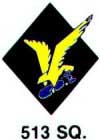
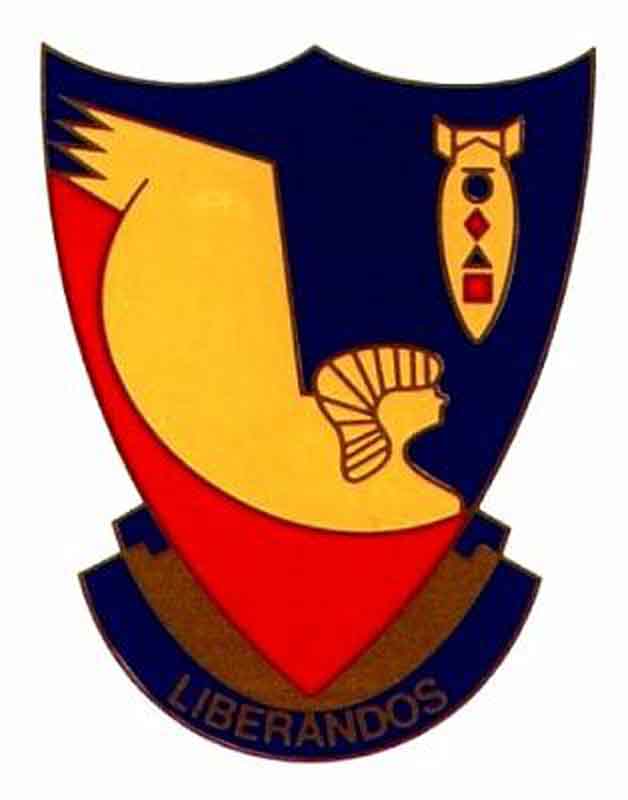
The website 376bg.org is NOT our site nor is it our endowment fund.
At the 2017 reunion, the board approved the donation of our archives to the Briscoe Center for American History, located on the University of Texas - Austin campus.
Also, the board approved a $5,000 donation to add to Ed Clendenin's $20,000 donation in the memory of his father. Together, these funds begin an endowment for the preservation of the 376 archives.
Donate directly to the 376 Endowment
To read about other endowment donation options, click here.
Reunion
NOTE change in the schedule !!
DATES: Sep 25-28, 2025
CITY:Rapid City, SD
HOTEL: Best Western Ramkota Conference Hotel; 2111 North LaCrosse St., Rapid City, SD 57702; 605-343-8500
Click here to read about the reunion details.
